The child is challenged to identify times during tasks (or in his/her daily routine) when “quiet time” is needed to regroup and reorganize.
Time: 15 minutes
Materials
Setup
1. With four tubes and four spheres, build a square and place it on the floor.
2. Repeat this step to make additional squares so there is one square for each child.
3. Place all the Toobeez squares in a line or in a circle on the floor.
Time: 15 – 30 minutes
Instruction: Individual
Space: Corner of the room
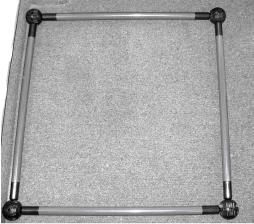
Step 1
Connect four 36“ tubes to form a square base
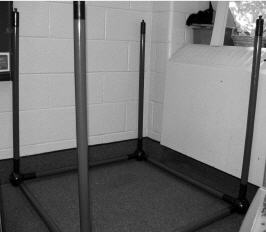
Step 2
Connect four more 36“ tubes so they extend vertically from the base
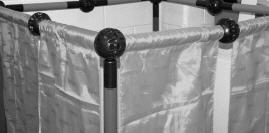
Step 3
Create the top part of the cube with eight 16“ tubes. Add all four curtains to create walls
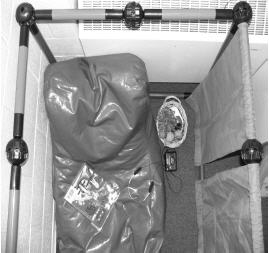
Step 4
Place selected relaxation items in the Quiet Corner
Therapist Tip: For added seclusion, drape a small parachute over the top of the Quiet Corner.
Helpful Hints
1. Once you have set up the Quiet Corner in the classroom or therapy room, place the bean bag chair, the cassette/CD player and music, the fidget box of goodies and the weighted blanket/sleeping bag inside the Quiet Corner area. This allows the children to choose which tools assist him/her best in calming and reorganizing their brain and body.
2. Give the child time to explore the variety of calming tools that are inside the Quiet Corner.
3. Observe the child’s behavior in a variety of settings and note his/her preferred activities and tasks. This may provide more ideas for calming tools to place inside the Quiet Corner.

This student explores vibration as a calming tactile experience.
4. Observe the times during the day that the child appears to need the Quiet Corner the most, and incorporate the Quiet Corner at the times during the day where the child appears to need help with getting ready to learn. Is it first thing in the morning after a long bus ride? Is it mid-morning after attending to seated work for an extended period of time? Is it after recess and the child is too “wound up” to sit at his/her desk and complete afternoon work? Does the child appear to have a “meltdown” or unravel at the end of the day after a full day of cognitive demands? Use the Quiet Corner as a part of the child’s sensory diet.
5. Observe the child’s behavior during specific tasks, and identify signs of frustration before the child unravels and suggest a break time in the Quiet Corner to regroup. Is the child becoming frustrated with a specific task that requires a lot of brain power? Heavy breathing, a clenched jaw, fisted hands, down on the desk or table, and distractibility are a few signs of increasing frustration.
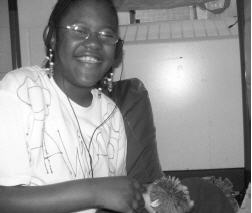
This student explores calming music through the headset and manipulates a Koosh Ball® in her hands.
6. Establish a routine. Children thrive on routine. Clear routines allow students to orient to the day, giving them a sense of order. It also helps them to anticipate the demands of the day and provides comfort.
7. Once the Quiet Corner has worked well for the student (either through their reports of “feeling better,” a smile, or you observe calmer behavior), begin to shift the responsibility of scheduling time in the Quiet Corner to the student. Provide the child times throughout the day to communicate the need to calm him/herself.
1. Use it as a place to work on tasks.
The Quiet Corner can also be used as a space for seated work that requires concentration and manipulation of materials. All of the sensory materials can easily be removed, and the Quiet Corner can provide boundaries for children that are easily visually distracted. The quality of work may improve, and the child may appear less anxious when presented with a task that requires sustained attention.
Here are available Training Options!
